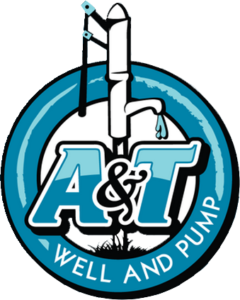If you have a well and are dealing with water issues, read this post to…
If you use a well for your home's water supply, and you find your water pressure is lacking, you're not alone. Needing an increase in water pressure is a common complaint for homeowners who use a well, but there are ways to fix it. Say goodbye to weak showers and washer cycles that take forever with some troubleshooting tips to increase water pressure.
Check Your Well Pressure Tank
Your well pressure tank sets your home's water pressure by compressing air in the tank to reach a set amount. When a faucet turns on, the air pressure pushes the water through the pipes and the pressure in the tank drops which triggers the well pump to turn on and pull water into the house. When the water faucet is turned off, pressure builds back into the tank until it returns to the specified shut-off setting.
Your home's water pressure should be around 40-60 psi so the first thing you need to do to troubleshoot your water pressure is to check the settings. First and foremost, turn off the circuit to your well pump, then, using an air pressure gauge (a tire gauge works), test the air fill valve on the top of your tank. If it's below 40, you'll want to adjust the pressure switch to boost your pressure.
Increase Water Pressure from Your Pressure Tank
To increase water pressure, first locate the well pump pressure switch located on the pipe that connects the well and the tank. It's a small rectangle-shaped box with a cover.
Remove the cover and you'll see two nuts that control specific setttings:
- The left is the "cut-in" pressure which tells the pump to turn on at a set level. You can increase this by turning the nut clockwise in 1/2" increments.
- The right is the "cut-off" pressure which tells the pump to shut off after reaching a set pressure. You can increase this by turning it clockwise in a 1/2" increment.
Turn the cut-off valve clockwise 1/2" and then turn the circuit breaker to turn the well pump back on. This way you can check your settings, and drain the water out of the tank by running a faucet until the pump starts running. This should have increased water pressure. Test the pressure, and if you're satisfied with the results, tighten the nuts, put the cover back on, and enjoy your water pressure.
It's important to never adjust your psi on your well pump pressure switch to above 60 as this can cause damage to your tank.
Call a Well Pump Repair Technician to Increase Water Pressure
If your well pump is short cycling, meaning it's turning on for a short burst, then turning off within a few minutes or less, your tank may not be filling to capacity, which results in low pressure. Calling a professional for well pump repair or well pump inspection may be necessary to determine why it's short cycling, as this can also lead to the pump burning out more quickly.
On the other hand, if the problem isn't the well pump, it may the the pressure tank. If it's not holding pressure, it may have a damaged diaphragm which affects the air pressure within the tank itself and reduces the psi. If this is the case, you may need to replace the tank itself.
Have Pipes Inspected for Blockage
Well water, especially hard well water, has a higher mineral content than municipal water which can leave behind sediment in the pipes. Over time, sediment and mineral scale will build up and reduce your water flow and choke off your water pressure. Having your pipes inspected and cleaned may increase water pressure. Then install a water softener or filtration system to keep it flowing as it should.
Contact Us to Increase Water Pressure Today!
Poor water pressure is a hassle, but it can also be the sign of a larger problem. We'll help you get to the bottom of it when you call our well pump repair and replacement technicians. To learn more about our services or get an estimate, give us a call at 919-291-4063 or fill out our contact form below to get started.
"*" indicates required fields

